Asus NUC 14 Pro AI mini PC review
The Asus NUC 14 Pro AI is the latest mini PC from the Taiwanese brand. This particular model was announced in December of last year and was the first mini PC to feature Intel's new Core Ultra processors (Series 2) along with Microsoft Copilot+.

The model we have here today is the flagship variant with the Intel Core Ultra 9 288V with 32GB of LPDDR5X memory. Asus sells this device as a barebones PC, meaning it does not include storage out of the box but our unit did come with 1TB SSD included for testing.
Before going further into the testing, it's worth noting the price. It's a bit tricky to get the pricing for Asus' NUC models and even if you are a customer you need to request a quote from the company to purchase it. We were informed that the model we were sent costs around $1100 but there's no confirmation on the actual MSRP as well as what the other variants are priced at.
With that out of the way, let's get on with the review.
Design
The Asus NUC 14 Pro AI has a familiar design. It would be fair to say that it has been inspired by the new Mac mini to some extent, considering Asus' previous NUC models all had a boxy shape.
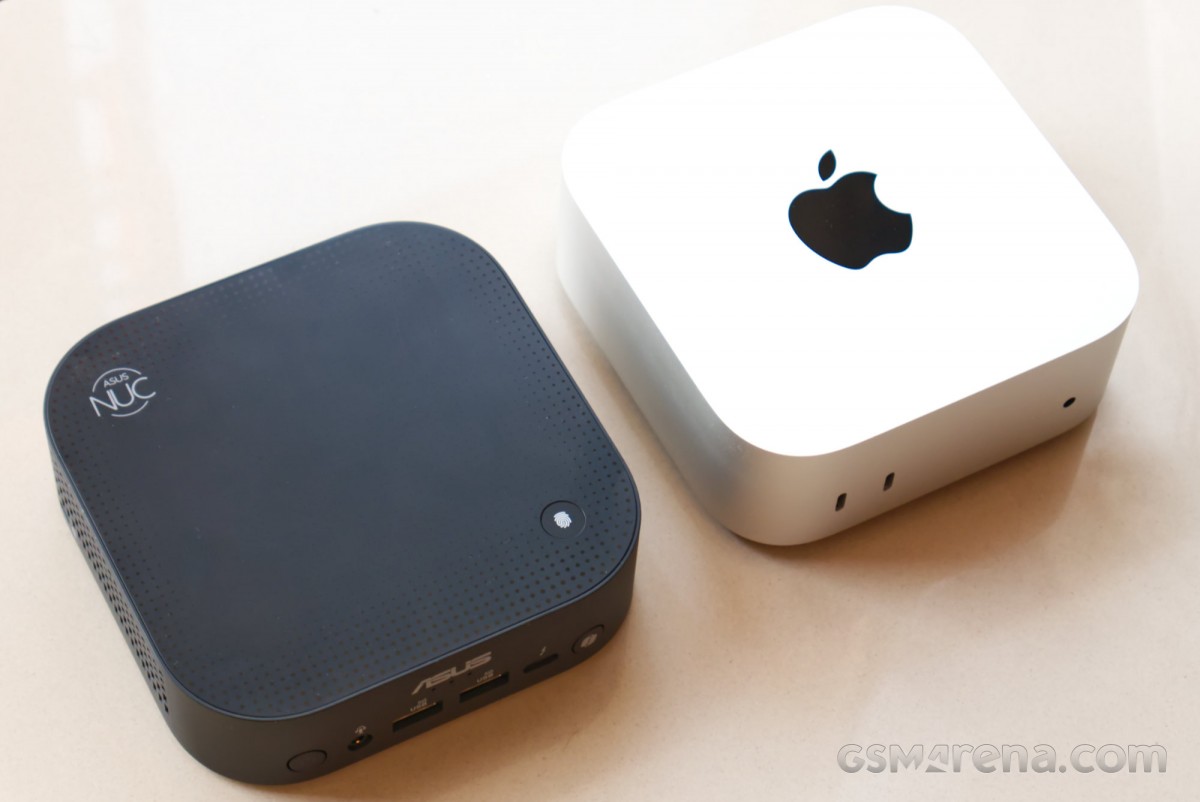
The shape is where the similarities end as the NUC 14 Pro AI is nowhere near as attractive or well-built as the Mac mini. Instead, the design is more utilitarian with a focus on lots of easily accessible ports and exposed air vents on the side. The body is mostly plastic except for the removable metal lid on the bottom. Asus claims the NUC 14 Pro AI is built to last with its military-grade MIL-STD-810H rating for durability.
The top of the body features the Asus NUC logo with a subtle print around it. In the opposite corner is a fingerprint sensor that works with Windows Hello.
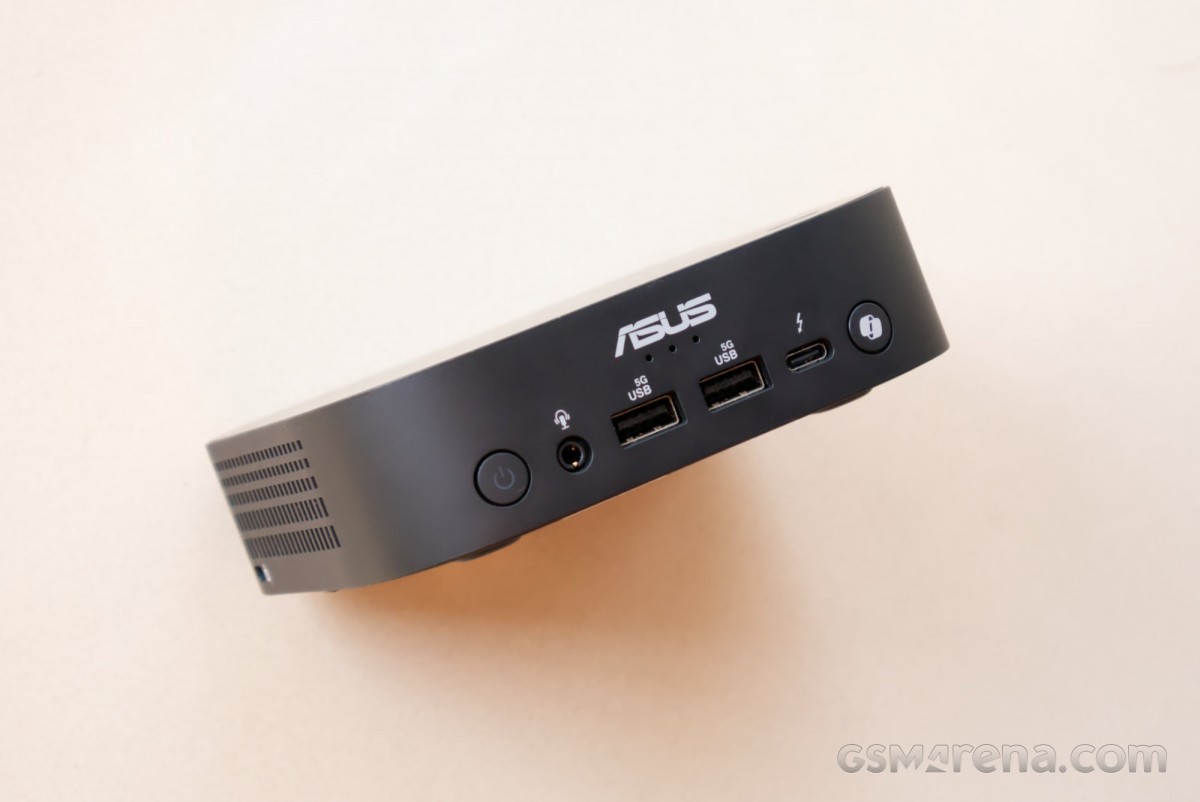
The front of the device is quite busy with several ports, a power button, and a dedicated Copilot key, which can be configured to do other things in Windows settings. On the right side of the unit is the intake vent, from which the air is pulled into the unit and then exhausted out the vent on the back. The left side also has a dummy vent along with a Kensington lock slot. Then on the back are several more ports along with the aforementioned exhaust.
The bottom of the unit is a single removable panel, which comes undone with a simple locking mechanism. This provides access to the SSD slot, which as mentioned in the beginning, should come empty and has to be populated by the user. You also have access to the pre-installed Intel wireless adapter but that's pretty much the extent of what's user accessible. Things like memory are integrated within the CPU die.
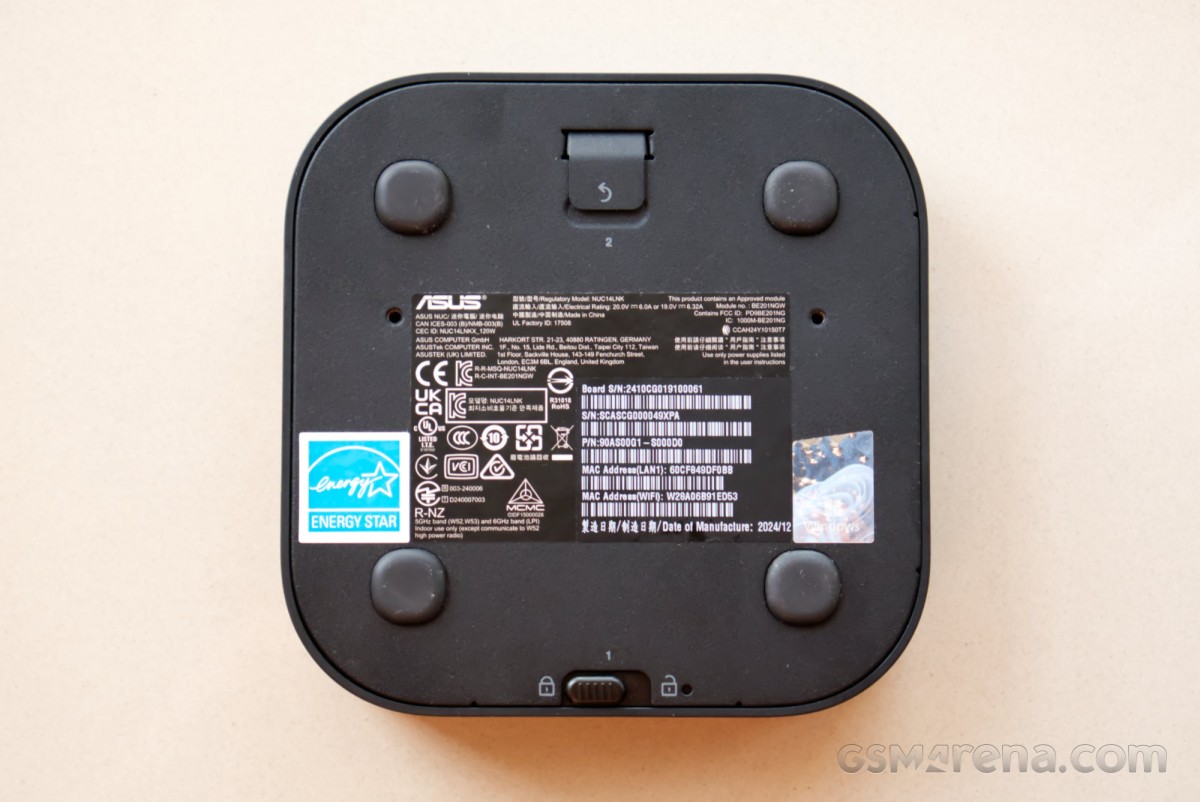
While the NUC 14 Pro AI isn't winning the beauty contest next to the Mac mini, it certainly wins in the overall port selection department. It also provides much easier access to the insides and while upgradability is limited, it can still be useful for maintenance reasons. Finally, the integrated fingerprint sensor is also a nice touch and does not require investing in expensive aftermarket accessories.
Hardware
The Asus NUC 14 Pro AI runs on Intel's latest generation Intel Core Ultra 200V series of chips based on the company's Lunar Lake architecture. These new chips use a unified design, with built-in CPU, GPU, NPU, and memory within a single package. Asus offers a choice of five different CPU models, which include the Core Ultra 5 226V and 228V, Core Ultra 7 256V and 258V, and finally, the Core Ultra 9 288V that we have in our unit.
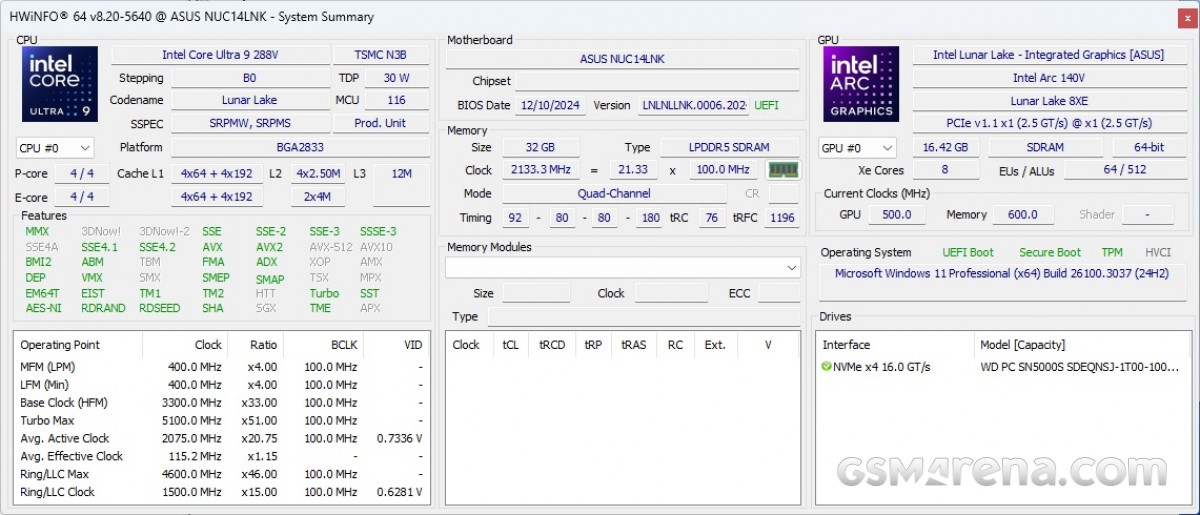
All of the chips have 4x P-cores and 4x E-cores with no HyperThreading but the main difference is in the clock speed and integrated memory. The 226V and 228V, for example, have the same 2.1GHz base clock and 4.5GHz boost clock but the 226V has 16GB memory while the 288V has 32GB memory. Similarly, the 256V and 258V have the same 2.2GHz base clock and 4.8GHz boost clock but different memories. Meanwhile, the flagship 288V gets a 3.3GHz base and 5.1GHz boost clock with 32GB memory. In each case, the memory is 8533MHz LPDDR5x shared across the CPU, GPU, and NPU.
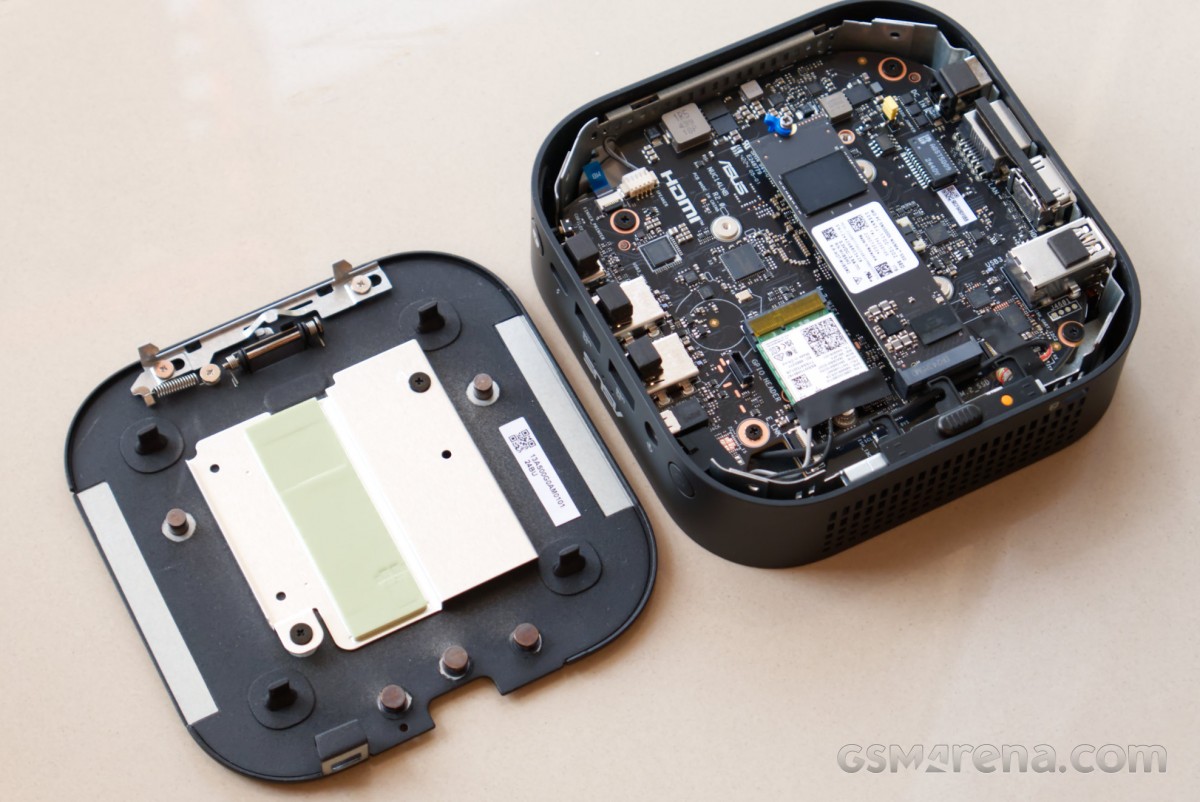
All chips have the latest generation Intel Arc graphics based on the company's Battlemage architecture, with the Core Ultra 5 models getting 7 Xe Cores and lower clocks while the Core Ultra 7 and 9 models get 8 Xe Cores and higher clocks. Similarly, the 5 series chips get 8MB Smart Cache while the 7 and 9 series chips get 12MB. Finally, the 5, 7, and 9 series chips get 40, 47, and 48 TOPS NPU, respectively.
As has been stated numerous times already, the storage has to be supplied by the user. It has been a thing with Intel NUCs since the beginning as they are primarily barebones PCs. The single SSD slot supports PCIe Gen4x4 drives in the standard M.2 2280 size. Our review unit came with a 1TB WD SN5000S NVMe SSD, which matches the required specs. The SSD does not have a heatsink attached but Asus does use a thermal pad on the bottom of the metal base cover, which then makes the cover act as a heatsink for the drive.
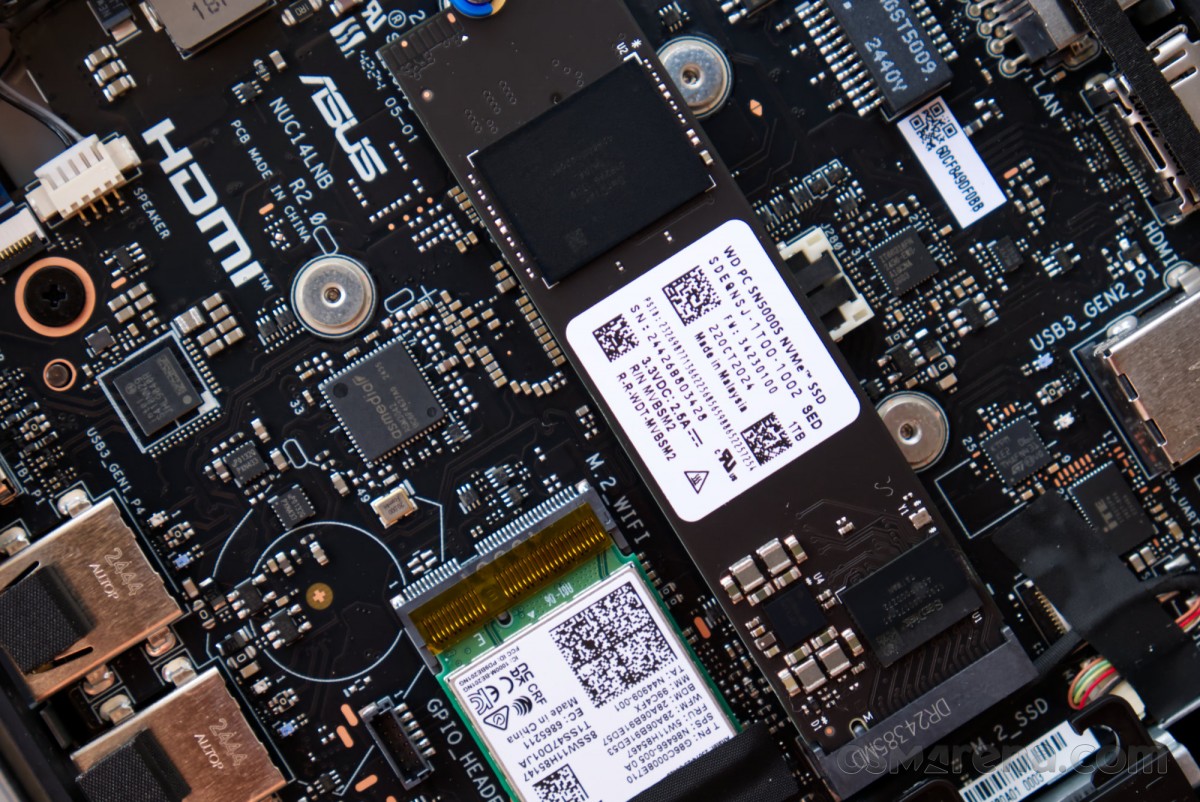
Similar to the Mac mini, the NUC 14 Pro AI has a single internal speaker, which sounds nowhere near as good nor anywhere as loud. However, the NUC 14 Pro AI also includes a microphone, which the Mac mini lacks, and makes using features like Copilot possible even if you don't have a headset plugged in.
Connectivity
The NUC 14 Pro AI comes with a good number of connectivity options for plugging in wired accessories. On the front are two USB-A ports rated at 5Gbps bandwidth, along with a Thunderbolt 4 port, and a headphone jack.
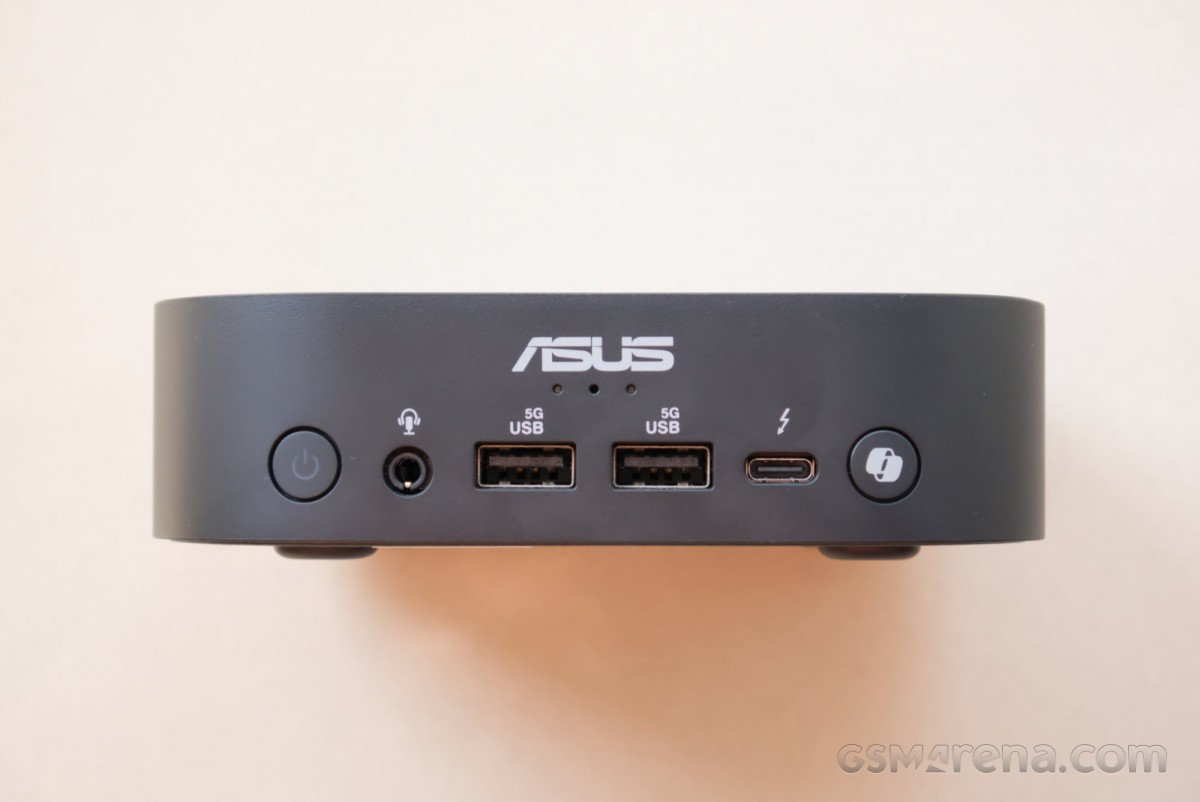
On the back are two more USB-A ports, this time rated at 10Gbps bandwidth, another Thunderbolt 4 port, HDMI 2.1, and 2.5G Ethernet. Aside from the HDMI, both the Thunderbolt 4 ports also support DisplayPort 2.1 so you can connect up to three displays at once.
On the wireless front, you get Wi-Fi 7 along with Bluetooth 5.4.
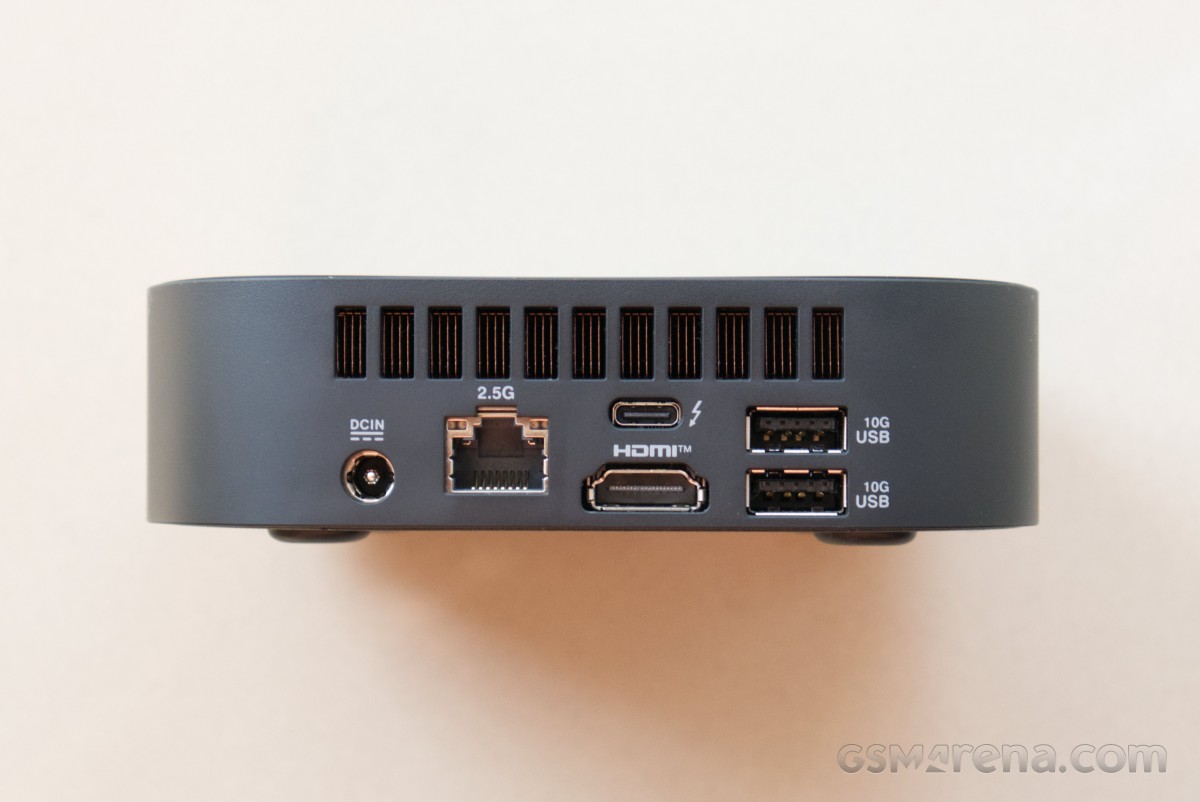
Asus certainly gets points for having a robust set of connectors, both on the front and back. However, there are some caveats. The layout of the ports on the front can make something wide like a card reader rendering the other ports unusable. Like the Mac mini, the NUC 14 Pro AI does not have an audio jack on the back, which is inconvenient if you use speakers as well as headphones. And unlike the Mac mini, the NUC 14 Pro AI has an external power brick, which takes up quite a bit of space and is probably more than half the volume of the NUC itself.
Performance
The Intel Core Ultra 9 288V in our unit was configured for a maximum package power of 37W. Depending on the power profile selected in the MyAsus app, the chip can throttle down to 23W in the Whisper mode or 34W in the Standard mode once the PL2 window expires. Or it can just stick to the 37W limit when set to the Performance mode.
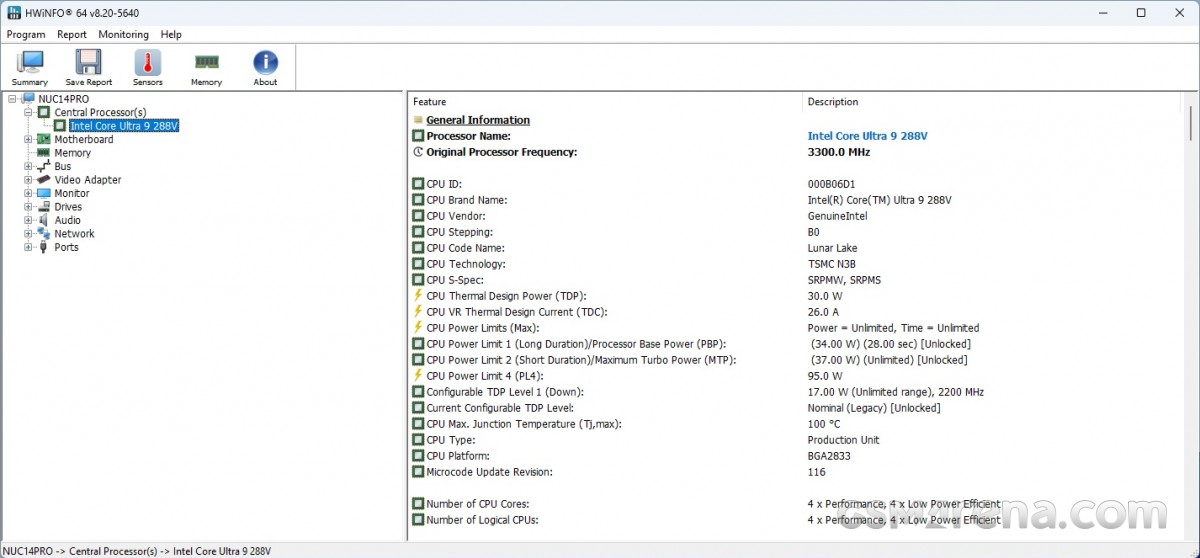
Starting with the benchmarks, the CPU performance was a bit of a mixed bag. The single-core performance was good; it's a notable improvement over the previous generation Intel chips while also being faster than the Snapdragon X Elite X1E 78 100 chip we tested last year despite the latter having a larger power budget. However, when it came to multi-core, the 288V wasn't as impressive, which is largely down to the 4x P-core and 4x E-core design with no HyperThreading. The Qualcomm chip here is significantly ahead with its 12-core design, all of which are equally powerful.
However, while you can and should argue that this isn't surprising considering the Snapdragon chip can hit 50W under load, the 288V runs out of excuses when pitted against the M4 inside the new Mac mini. The M4 outperformed the 288V in every one of our benchmarks, being 36% faster in the Cinebench 2024 single-core test and 43% faster in the multi-core test. In the Blender CPU test, the M4 was a brutal 64% faster while the GPU render was an absolute beatdown, with the M4 being 145% faster. And through all of this, the M4 chip is pulling 10-15W less than the 288V.
| Benchmark | Test | Result |
|---|---|---|
| Cinebench R23 | Single | 1990 |
| Multi | 11032 | |
| Cinebench 2024 | Single | 126 |
| Multi | 674 | |
| Geekbench 6 | Single | 2868 |
| Multi | 11227 | |
| Geekbench AI (NPU) | Single precision | 3048 |
| Half precision | 16620 | |
| Quantized | 23346 | |
| Blender (Classroom) | CPU | 617 seconds |
| GPU | 145 seconds | |
| 7-Zip | Compression | 62.349GIPS |
| Decompression | 55.164GIPS | |
| Corona 10 | Rays/s | 3,304,431 |
| PCMark 10 | Total | 7038 |
| Essentials | 9994 | |
| Productivity | 9520 | |
| Digital content creation | 9941 | |
| 3DMark | Time Spy | 4654 |
| Steel Nomad | 577 | |
| Solar Bay | 17128 |
In real-world usage, the performance mostly feels adequate. The 288V inside the NUC 14 Pro AI can deal with your typical web browsing and emailing needs just fine but is unable to hide its low-power mobile design when you start performing more demanding tasks, such as running photo or video editing programs. It has none of the sense of urgency, fluidity, or speed of the M4 in such applications, which doesn't even feel like a low-power chip and may as well be a full-size desktop part.
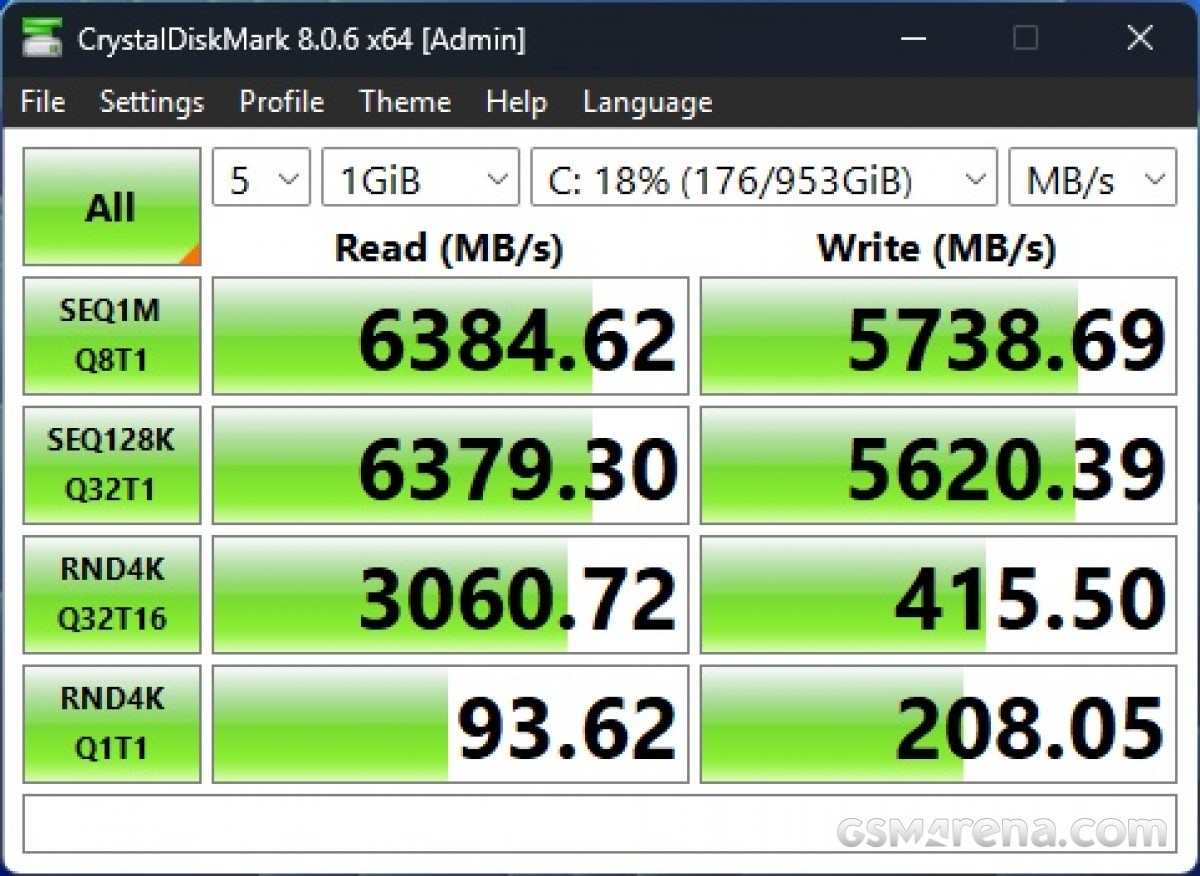
Asus puts a lot of focus on the AI capabilities of the machine (they even added it to the name) but we currently don't have great methods outlined for testing AI performance aside from the Geekbench result. Also, if that's something you are interested in, then a mini PC might not necessarily be the play for you.
Gaming
The integrated Arc GPU on the 288V is surprisingly capable. Intel has worked hard on its integrated graphics over the years and it shows. Thanks to that, the NUC 14 Pro AI is a surprisingly capable gaming machine.
Having tried dozens of titles on the little machine, I was impressed with the way it was able to handle most of them. This was also an opportunity for me to try Intel's latest generation Battlemage architecture, which has seen quite a few improvements over the first-generation Alchemist.
| Game | Setting | 1080p | 720p |
|---|---|---|---|
| Alan Wake 2 | Low | 18.9fps | 26.9fps |
| Cyberpunk 2077 | Low | 49.2fps | 75.5fps |
| Death Stranding Director's Cut | Medium | 60fps | 78.6fps |
| Elden Ring | Low | 52.6fps | 54.7fps |
| God of War Ragnarök | Low | 55.4fps | 68fps |
| Hogwarts Legacy | Low | 42.4fps | 61.6fps |
| Marvel Rivals | Low | 57.6fps | 97.2fps |
| Metro Exodus | Low | 93.4fps | 123.5fps |
| Resident Evil 4 | Prioritize Performance | 57.3fps | 83fps |
| Shadow of the Tomb Raider | Low | 75.8fps | 105.4fps |
The first test was to see if the games ran at all on this new architecture and every single one of the games I tried did launch and run without any major technical issues. Only two games had issues post-launch, the first being Counter-Strike 2, which stuttered a lot in-game, rendering it mostly unplayable due to poor frame-time performance. The other was God of War Ragnarök, which had some flashing artifacts on screen at times but was otherwise completely playable.
The overall performance of the machine was a few percentage points better than the Ryzen Z1 Extreme inside devices like the ROG Ally, which also meant it was better than the Steam Deck. This puts the performance of the NUC 14 Pro AI somewhere between the PS4 and the PS4 Pro, which is not bad for a low-power mini PC. With a combination of optimized settings and image upscaling, I was able to get playable performance in nearly every game I tried.
When it comes to gaming, there is no comparison to the Mac mini. While the Mac has come a long way, Windows still gets all the games first and the NUC 14 Pro AI also runs them much better than the M4 Mac mini.
Thermals and Noise
The Asus NUC 14 Pro AI has good thermal performance. Thanks to the relatively low-power nature of the chip and ample cooling, the device never thermal throttles.
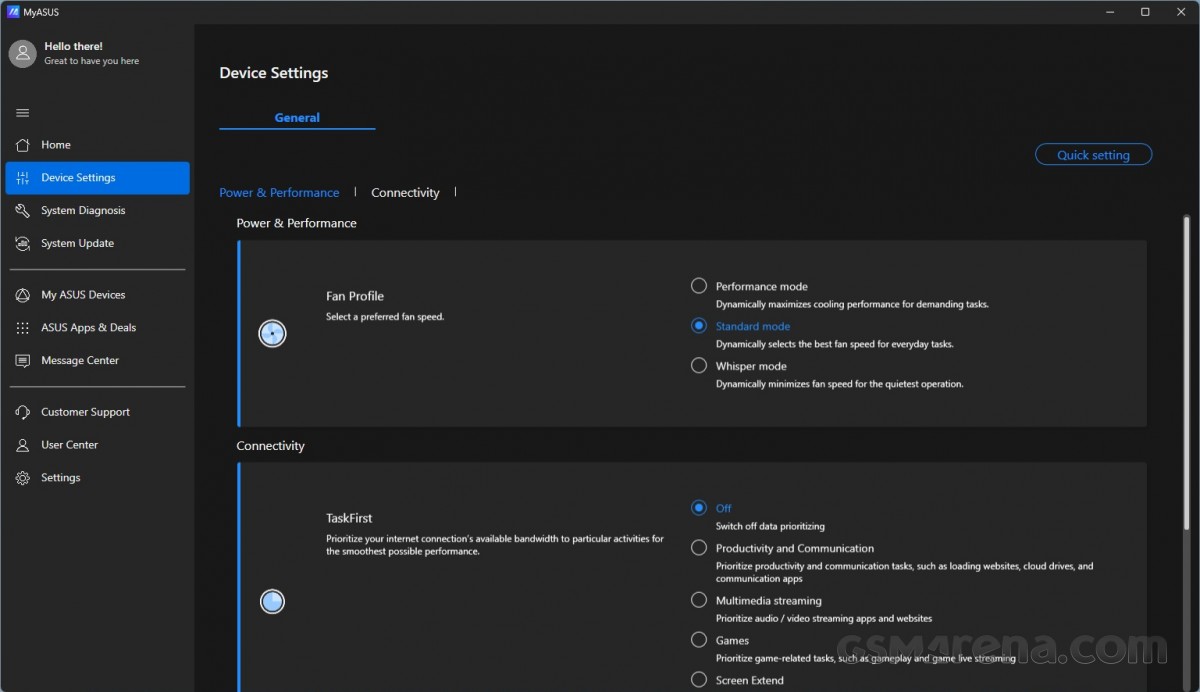
In the Performance profile, the temperatures peak at about 78°C with the fan blasting at high speed and the chip maintaining its peak 37W target indefinitely. Unfortunately, the fan is quite loud in this setting, so it's not recommended for everyday use.
The Standard mode is the default and for good reason. In this mode, the chip boosts up to 37W and stays there for a while until eventually dropping down to 34W once PL2 expires. In this mode, the temperatures peak at about 82°C, which isn't much since the fan is a lot quieter and barely audible at times. You don't lose much performance in this mode; only about 3% in the extended Blender render test, which makes this the mode you should be using all the time.
| Blender (Classroom) | Performance | 617 seconds |
| Standard | 640 seconds | |
| Whisper | 745 seconds |
The Whisper mode is true to its name and is never audible, even under load. Here, the chip settles down to about 23W once PL2 expires, which means you lose about 17% performance in extended multi-core usage but is still fine for everyday use.
Compared to the Mac mini, the NUC 14 Pro AI is certainly louder and more audible. However, it does strike a better balance between noise and temperature when considering the 100°C temperatures the M4 routinely hits inside the Mac mini.
Conclusion
The Asus NUC 14 Pro AI is a compact, well-designed little PC with good connectivity options that runs cool and quiet. The performance is quite adequate for everyday home and office tasks, and you can even get some good gaming performance out of it.
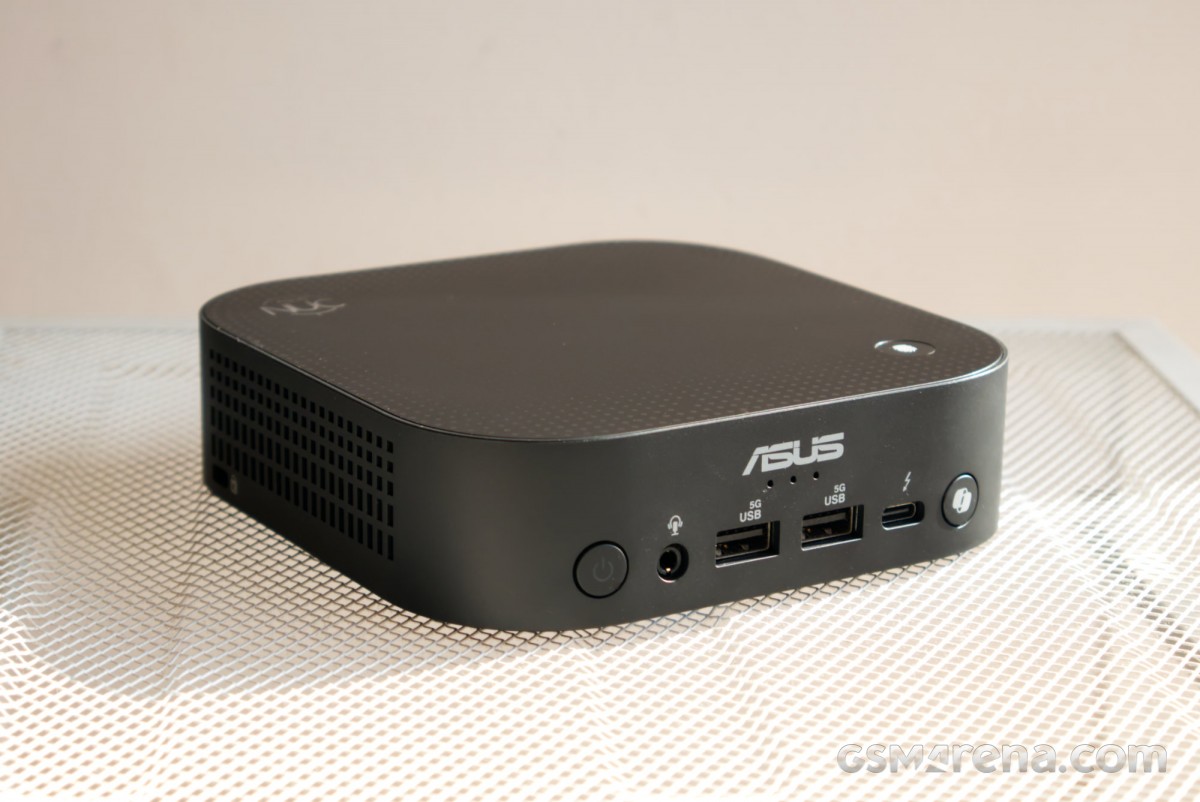
Unfortunately, the machine is targeted more at business and industrial users and thus comes with an inflated price tag that isn't even remotely justified. In markets like India, where our unit was sourced from, the NUC 14 Pro AI costs roughly the same as the M4 Pro Mac while being slower than the base M4 Mac mini. And you don't even get an SSD.
So while it was fun to test this machine, unless Asus comes up with a sensible pricing for it in the future, it's not worth considering for the average home user.
Related
Reader comments
- Listic
- 09 Feb 2025
- Stx
I wonder why Intel makes it so hard for manufacturers to produce PCs with its latest processors? I checked to see if another manufacturer known for more reasonable prices (Beelink) has released mini PCs with this series of processors and it turned ou...
- Anonymous
- 04 Feb 2025
- 70d
I said that mini PCs are cheaper than laptop with the same specs. I don't defend the price of this mini PC, by the way. About $1,100 without storage is ridiculous.
- Anonymous
- 04 Feb 2025
- Sr6
What's all this ai hype about anyways and why did it suddenly pop up all over the world at the same time? A couple is years ago nobody ever heard this word AI now it's all over the news and all devices have it. Wtf is really going on







 Samsung
Samsung Xiaomi
Xiaomi Samsung
Samsung Nothing
Nothing Samsung
Samsung


